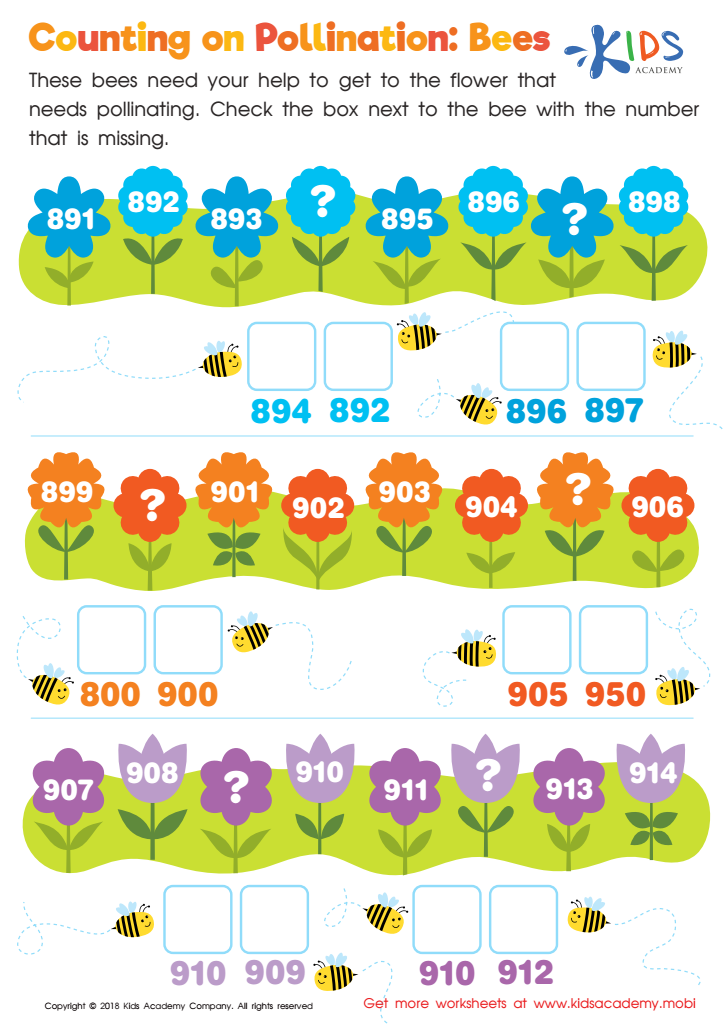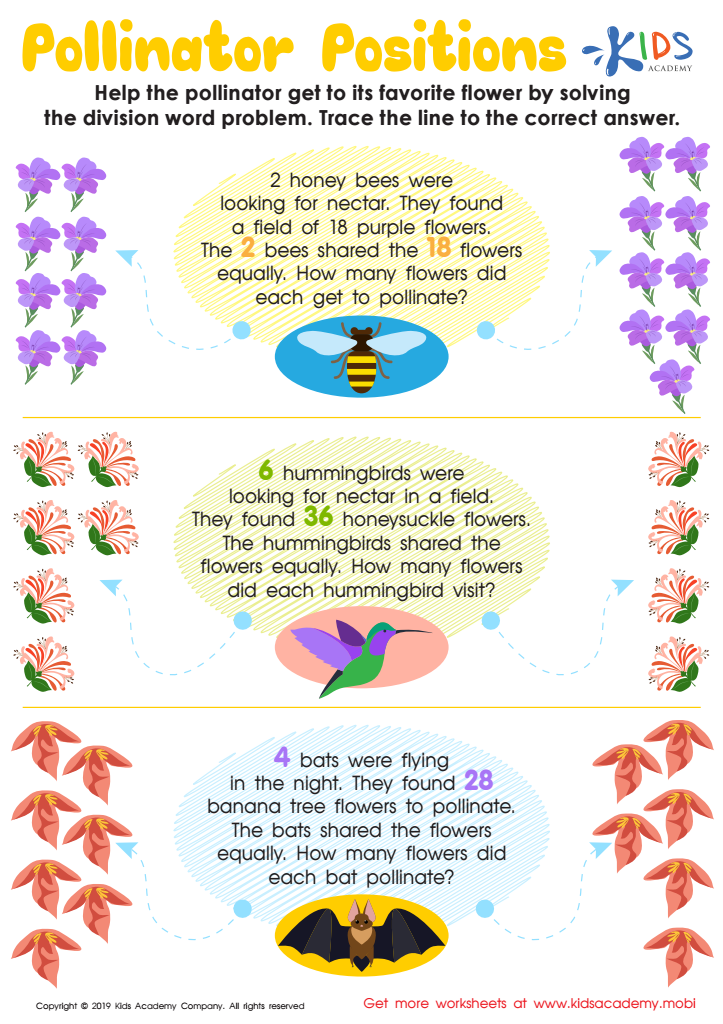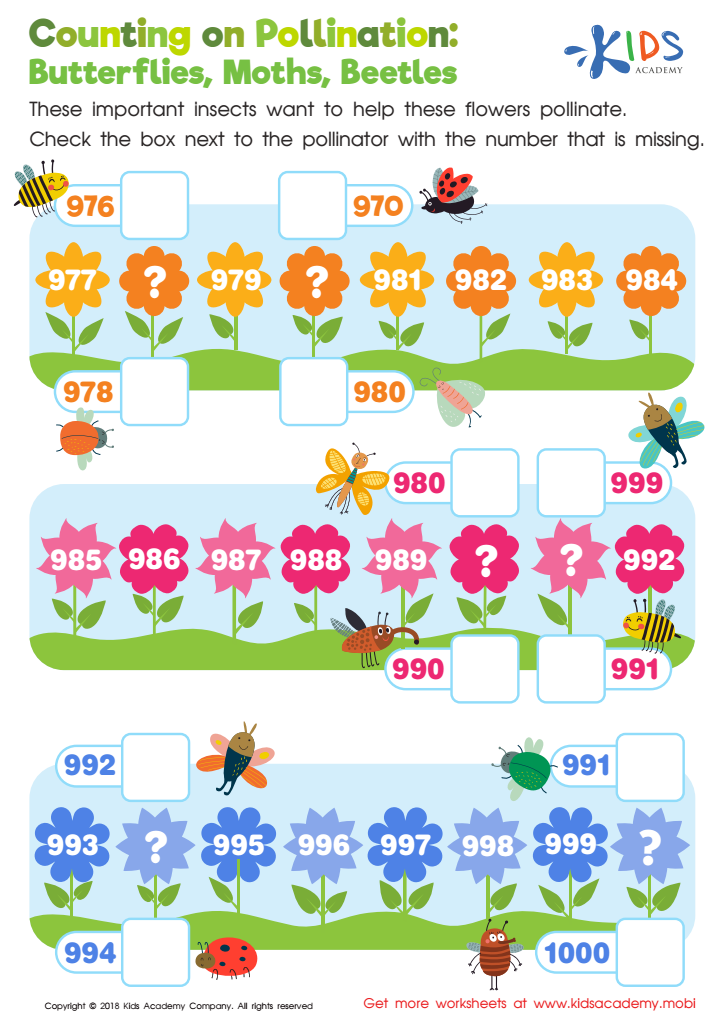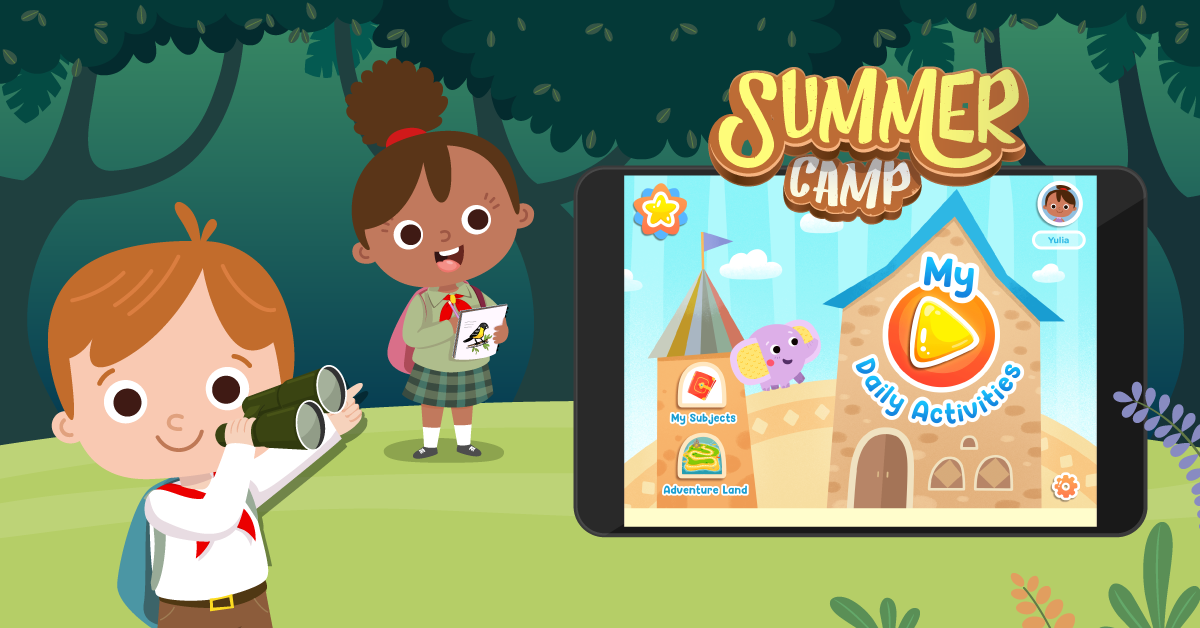Understanding pollination Normal Math Worksheets for Ages 3-9
3 filtered results
-
From - To
Unlock the wonder of nature and math with our "Understanding Pollination" printable worksheets designed for ages 3-9. Created by educational experts, these worksheets combine essential math skills with captivating, science-based themes. Children will explore the fascinating process of pollination while mastering foundational math concepts like counting, patterns, and simple addition. Every worksheet aligns with national education standards, ensuring engaging and impactful learning experiences. Whether for classrooms or homeschooling, our worksheets are perfect for nurturing curiosity and fostering a love of math and science. Boost your child's learning journey today with "Understanding Pollination" worksheets!


Counting on Pollination: Bees Worksheet


Pollinator Positions Worksheet


Counting on Pollination: Butterflies, Moths, Beetles Worksheet
Understanding pollination is important for young children because it builds a foundation for learning about life sciences and the environment. For kids aged 3-9, pollination can be an exciting and accessible concept due to its connection with nature, flowers, and even food. Children at this age are naturally curious and understanding how plants grow and reproduce helps them develop a sense of wonder and respect for the environment.
Pollination lessons can also foster important skills like observation, critical thinking, and problem-solving. By learning about pollinators like bees, butterflies, and even the wind, kids grasp the concept of interdependence in ecosystems. This knowledge encourages them to appreciate and protect natural habitats.
Integrating pollination into math lessons can enhance numerical and logical reasoning. For example, counting the number of flowers in a garden or measuring the growth of pollinated plants are practical ways to apply math skills. It also builds a foundation for more complex scientific concepts they will encounter later.
For parents and teachers, these lessons are more than just academic exercises. They are opportunities to instill lifelong values of stewardship and connectedness. Understanding pollination helps children see the world as an intricate, interconnected system where they can play a positive role.

 Assign to My Students
Assign to My Students
















